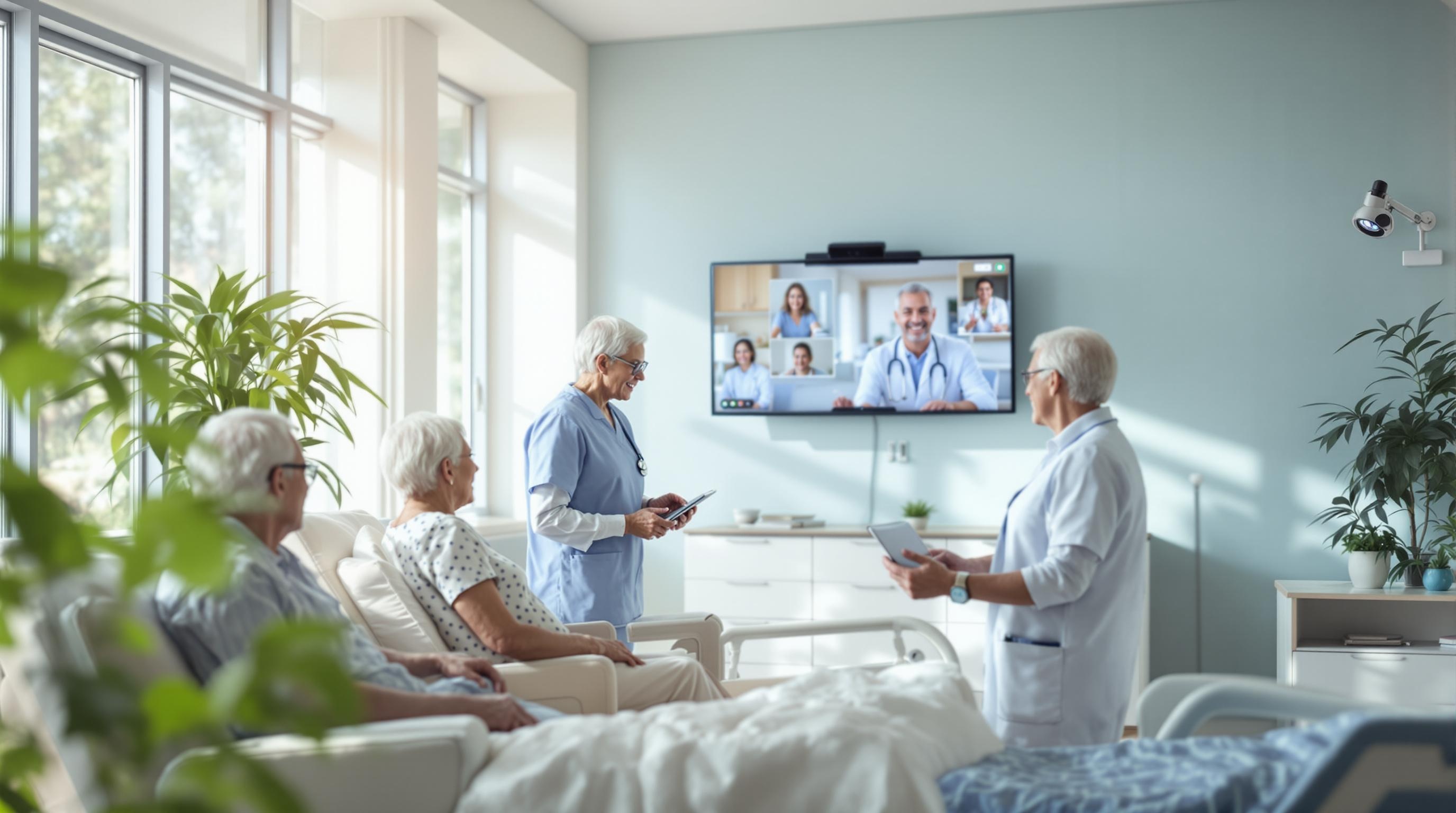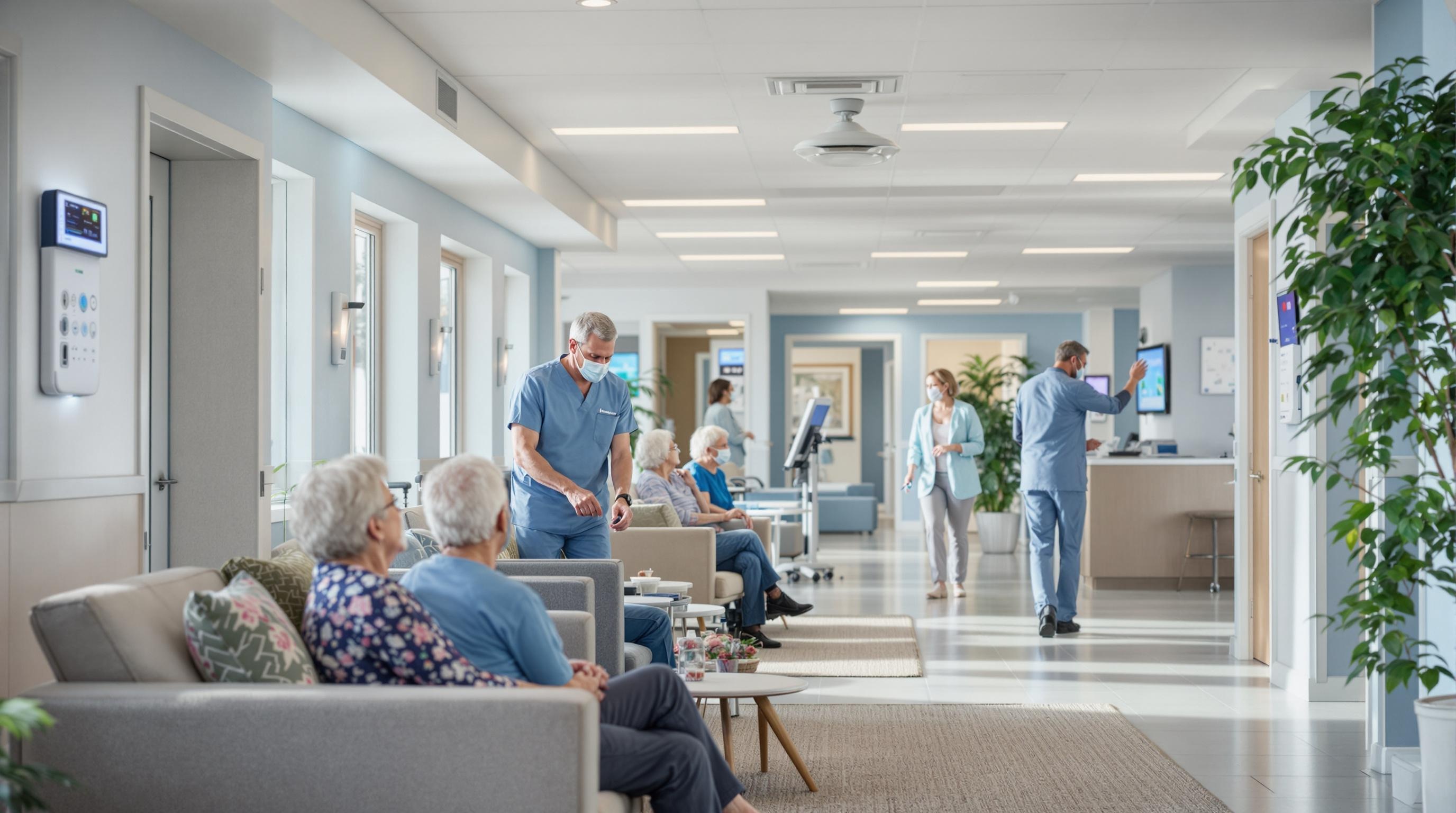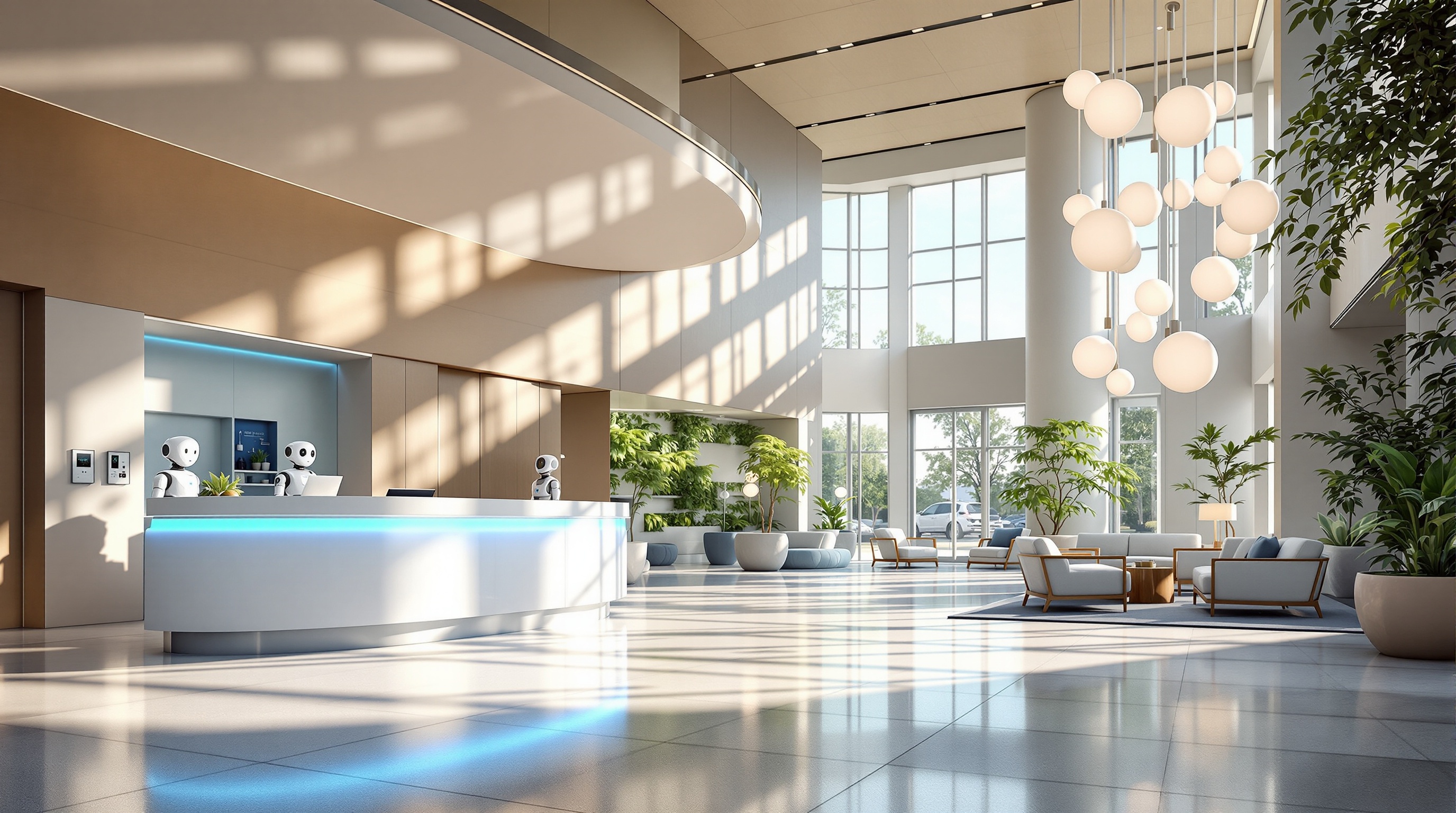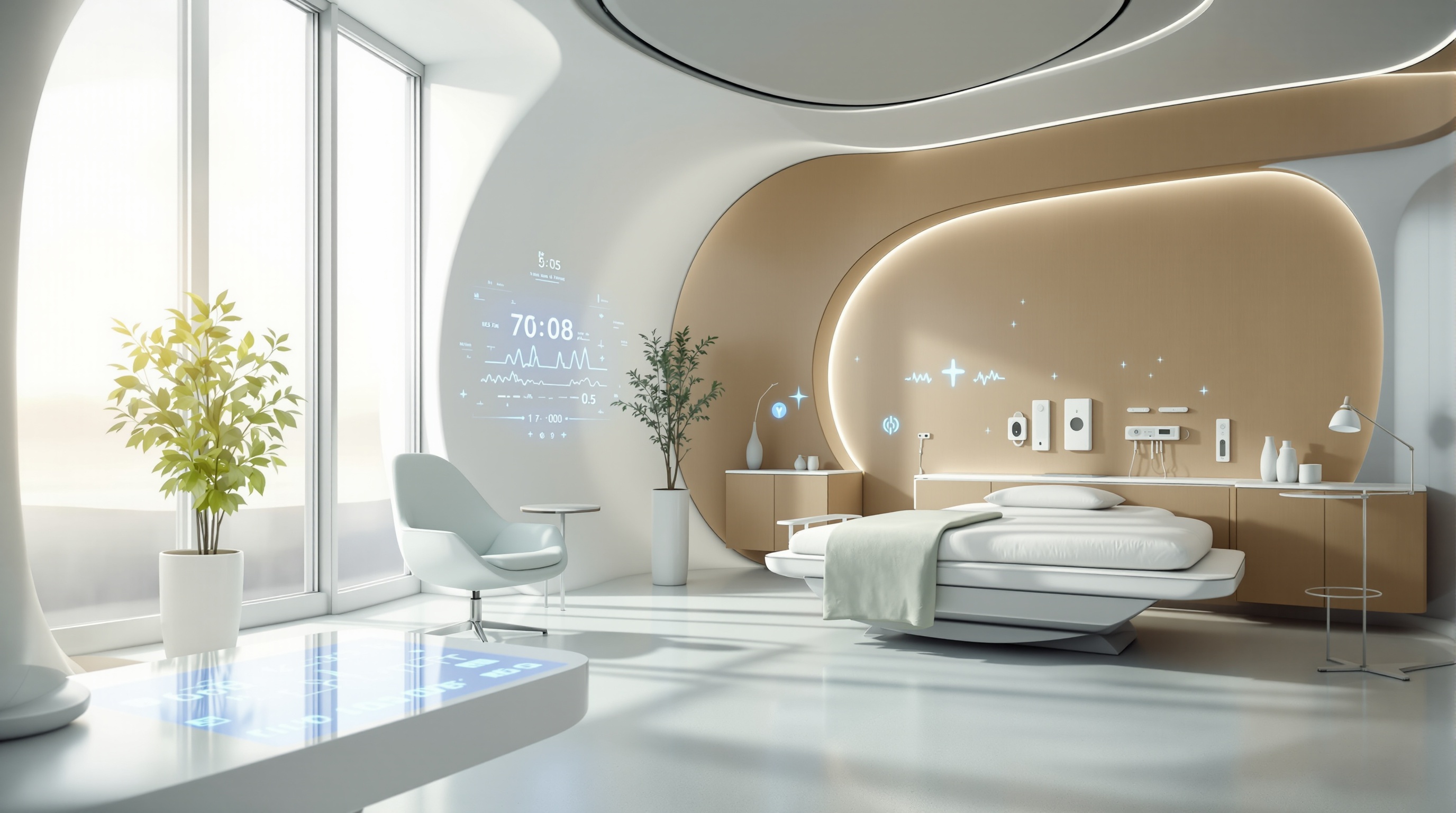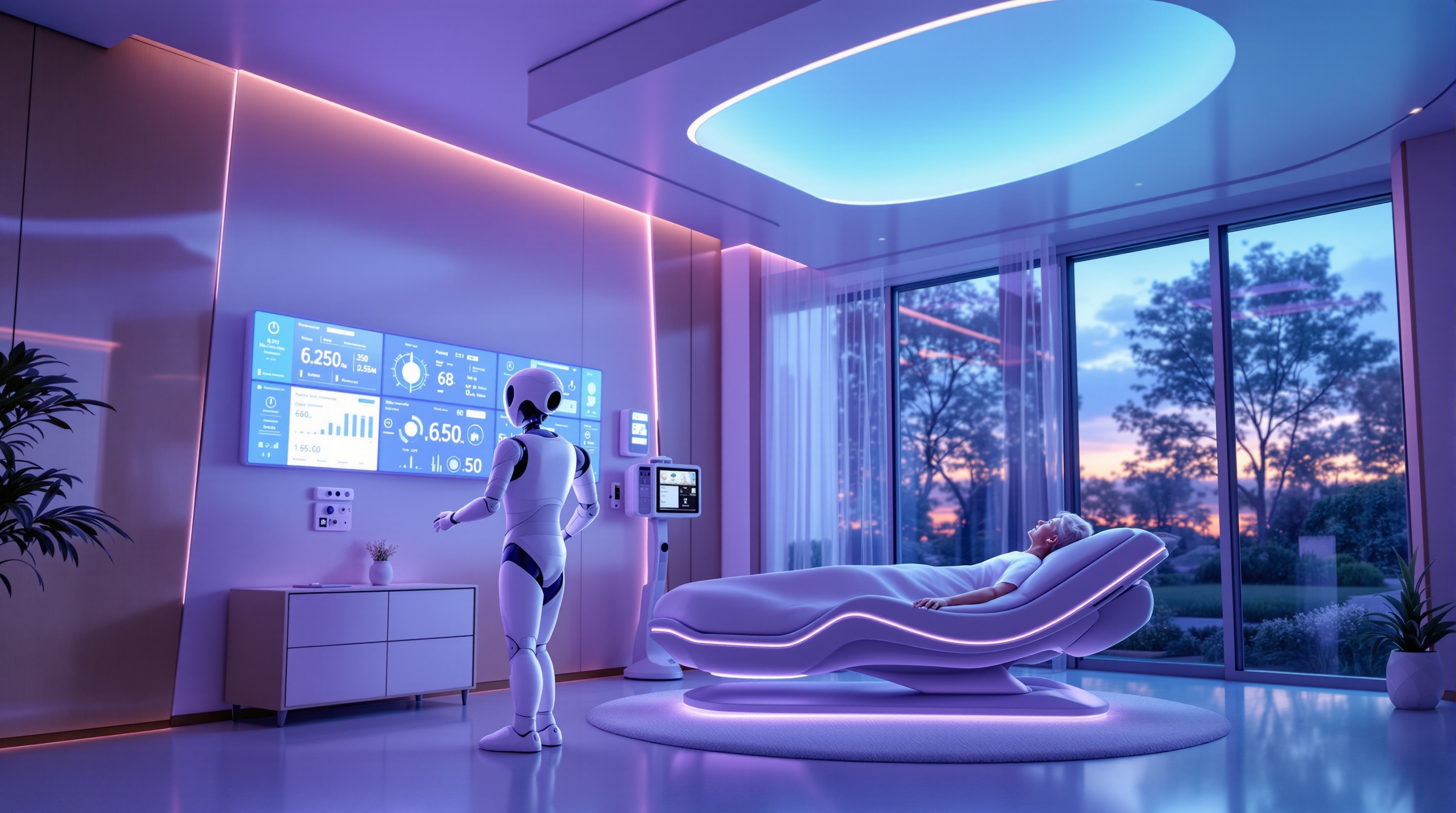Senior Care Technology: Innovations Transforming Skilled Nursing
Discover how senior care technology is revolutionizing skilled nursing facilities with AI, telehealth, and smart devices to enhance resident care.
Quick Navigation
- 1. Introduction
- 2. Current Challenges in Senior Care Technology
- 3. How Sparkco AI Transforms Senior Care Technology
- 4. Measurable Benefits and ROI
- 5. Implementation Best Practices
- 6. Real-World Examples
- 7. The Future of Senior Care Technology
- 8. Conclusion & Call to Action
1. Introduction
Did you know that by 2025, the U.S. senior population is projected to reach nearly 72 million? As the number of older adults rises, skilled nursing facilities face mounting challenges: staff shortages, increasing care demands, and the need to deliver more personalized, efficient support. Traditional approaches are no longer enough—today’s caregivers must balance higher expectations from residents and families with limited resources and a rapidly evolving healthcare landscape.
This is where senior care technology steps in as a game-changer. From artificial intelligence (AI) that streamlines operations to wearable health devices that monitor resident wellbeing in real time, emerging technologies are transforming the way skilled nursing facilities deliver care. Recent research highlights how tools like electronic health records (EHRs), telemedicine, and robotics not only boost care quality but also help relieve workforce pressures—enabling staff to focus on what matters most: compassionate, hands-on care.
In this article, we’ll explore the latest trends shaping senior care technology in skilled nursing facilities. You’ll discover how innovations such as AI-powered analytics, vital sign monitoring, and smart communication tools are not just futuristic concepts, but practical solutions being implemented today. We’ll also take a closer look at the opportunities and challenges these technologies present, empowering facility leaders to make informed decisions for the future of resident care.
2. Current Challenges in Senior Care Technology
As the need for high-quality senior care grows, healthcare facilities are increasingly adopting advanced technologies to improve patient outcomes, streamline operations, and ensure regulatory compliance. However, integrating and optimizing senior care technology presents several significant challenges. These pain points can hinder facilities' ability to deliver the best possible care and remain competitive.
-
1. Integration with Legacy Systems
Many skilled nursing facilities still rely on outdated electronic health record (EHR) systems and paper-based processes. Integrating new technologies—such as remote monitoring, telehealth, or medication management platforms—often proves difficult and expensive. According to a 2023 report by HealthIT.gov, only 46% of skilled nursing facilities use certified EHR technology, highlighting the integration gap. -
2. Staff Training and Digital Literacy
Successful implementation of senior care technology depends on staff competency and comfort with digital tools. Unfortunately, a 2021 LeadingAge CAST survey found 64% of facilities cited staff resistance and lack of training as primary barriers to tech adoption. This impacts workflow efficiency and can lead to errors in patient care. -
3. Data Privacy and Security Concerns
Handling sensitive patient data with new technologies increases the risk of breaches and non-compliance with regulations such as HIPAA. The U.S. Department of Health & Human Services reported a 25% rise in healthcare data breaches in 2023, underscoring the urgent need for robust security protocols in senior care environments. -
4. Cost Constraints and ROI Uncertainty
Many senior care facilities operate on thin margins, making it challenging to invest in expensive technology upgrades. A Zebra Technologies survey found 58% of long-term care providers cite cost as the biggest obstacle to technology adoption. This uncertainty about return on investment can delay necessary innovation. -
5. Interoperability Issues
Achieving seamless communication between different systems—such as hospital EHRs, pharmacy software, and wearable devices—remains a challenge. According to a KFF brief, only 18% of long-term care facilities can electronically exchange health information with external providers, impacting care coordination and patient safety. -
6. Regulatory Compliance Complexities
Senior care facilities must navigate a complex web of federal, state, and local regulations. Keeping up with evolving technology standards and compliance requirements—such as CMS's interoperability rules—can burden administrative staff and increase the risk of costly violations. -
7. Patient and Family Engagement
Seniors and their families may struggle to adapt to new technologies, such as patient portals or telehealth platforms. A Pew Research Center survey found only 61% of Americans aged 65+ own smartphones, indicating a digital divide that can lead to patient disengagement and hinder care outcomes.
These challenges have a tangible impact on healthcare operations, compliance, and—most importantly—patient care. Facilities that cannot overcome these hurdles risk operational inefficiencies, increased regulatory scrutiny, and suboptimal health outcomes for seniors. Addressing these pain points is essential for transforming senior care and meeting the evolving expectations of residents, families, and regulators.
3. How Sparkco AI Transforms Senior Care Technology
The world of senior care is rapidly evolving, with technology playing a crucial role in improving care quality, efficiency, and resident well-being. However, integrating and leveraging technology in skilled nursing facilities comes with unique challenges, from data silos and staff shortages to ensuring compliance and personalized care. Sparkco AI is purpose-built to tackle these challenges, offering advanced yet user-friendly solutions that empower care teams and elevate resident experiences.
-
Seamless Data Integration
Senior care providers often struggle with disconnected systems and scattered information. Sparkco AI connects with existing electronic health records (EHR), nurse call systems, and medication management platforms, bringing all critical data into a unified dashboard. This integration reduces time spent toggling between systems, ensures information accuracy, and gives staff a holistic view of each resident’s needs. -
Automated Documentation and Reporting
Manual record-keeping is time-consuming and prone to errors. Sparkco AI automates documentation by capturing care activities, updating records in real-time, and generating compliance-ready reports. This not only eases staff workloads but also ensures regulatory requirements are met without extra administrative burden. -
Intelligent Alerts and Predictive Analytics
Early identification of health risks is crucial in senior care. Sparkco AI uses predictive analytics to monitor changes in resident conditions, flagging potential issues such as fall risk or medication side effects before they escalate. Instant alerts enable proactive intervention and keep families and care teams informed. -
Personalized Care Planning
Each resident has unique preferences and health needs. Sparkco AI leverages artificial intelligence to analyze health history, lifestyle, and care outcomes, recommending tailored care plans. This helps staff deliver more person-centered care, improving satisfaction and health results. -
Workforce Optimization
Staffing shortages and high turnover are common in senior care. Sparkco AI automates scheduling, task assignments, and tracks staff workloads, ensuring optimal coverage and balanced shifts. This reduces burnout, improves staff retention, and guarantees residents receive consistent, high-quality care. -
Easy Integration and Scalability
Adopting new technology shouldn’t disrupt daily operations. Sparkco AI is designed for smooth integration with current systems and workflows. Its cloud-based architecture allows facilities to scale effortlessly as their needs grow, supporting everything from single-site operations to multi-location networks.
By bringing together cutting-edge AI, automation, and seamless integration, Sparkco AI transforms the way skilled nursing facilities tackle senior care technology challenges. The platform empowers staff to focus on compassionate care, streamlines operations, and ensures residents receive the personalized support they deserve—all with minimal technical overhead and maximum impact.
4. Measurable Benefits and ROI
The adoption of automated senior care technology is rapidly transforming skilled nursing facilities (SNFs) and long-term care environments. These solutions, including telehealth, remote monitoring, and electronic medication management, deliver substantial return on investment (ROI) while enhancing resident outcomes. Below, we examine six key measurable benefits—supported by recent studies and industry data—that demonstrate the tangible impact of automation in senior care.
-
1. Reduced Hospital Readmissions (Up to 70% Decrease):
Automated monitoring systems and telebehavioral health services have been shown to reduce unnecessary hospitalizations. For instance, a three-year study involving 7,000 patients in long-term care found that telebehavioral health interventions significantly lowered ED visits and hospital admissions, contributing to lower overall costs of care. [HFMA Study] -
2. Cost Savings (Average $1,500–$2,000 per Resident Annually):
Facilities implementing automated medication dispensing and telehealth platforms report annual cost savings ranging from $1,500 to $2,000 per resident by minimizing adverse drug events, improving medication adherence, and decreasing transportation needs for off-site appointments. -
3. Time Savings for Staff (30–50% Efficiency Gains):
Automated documentation, incident reporting, and workflow management reduce administrative tasks for caregivers by as much as 50%, according to industry analyses. This allows nursing staff to spend more time delivering hands-on care, improving both staff satisfaction and resident engagement. -
4. Enhanced Regulatory Compliance (Up to 90% Reduction in Documentation Errors):
Automated EHRs and compliance tracking tools help facilities maintain up-to-date records and adhere to CMS and HIPAA requirements. Studies indicate up to a 90% reduction in documentation errors, leading to fewer violations and audit risks. -
5. Improved Resident Safety (40% Fewer Medication Errors):
Electronic Medication Administration Records (eMAR) and automated alerts reduce the incidence of medication errors by up to 40%, supporting safer care transitions and reducing liability. -
6. Increased Staff Retention (Turnover Reduced by 15–20%):
By alleviating paperwork and providing real-time support, automated solutions contribute to lower burnout rates and staff turnover. Facilities report staff turnover rates dropping by 15–20% after implementing integrated care technology. -
7. Streamlined Billing and Reimbursement (30% Faster Claims Processing):
Automation accelerates billing cycles and reduces denied claims, with facilities observing up to 30% faster claims processing and improved revenue cycle management. -
8. Enhanced Family and Resident Satisfaction (Up to 25% Improvement):
Technologies that enable family portals, digital communication, and televisitation report satisfaction scores increasing by as much as 25%, as families stay informed and involved in care plans.
The evidence is clear: automated senior care technology delivers measurable ROI by improving care quality, safety, and compliance while reducing costs and administrative burdens. As the sector continues to embrace digital transformation, facilities that invest in automation are better positioned for sustainable growth and resident satisfaction. For more insights on the financial and clinical benefits of these innovations, read the full HFMA case study.
5. Implementation Best Practices
Successfully integrating technology into senior care environments requires a strategic, resident-centered approach. Adhering to best practices ensures compliance with updated CMS guidelines, enhances resident quality of life, and drives staff adoption. Below are actionable steps and tips for a smooth technology implementation process, with key pitfalls and change management considerations highlighted along the way.
-
Conduct a Thorough Needs Assessment
Engage residents, families, and staff to identify pain points and technology gaps. Survey users and observe workflows to ensure solutions address real needs.
Tip: Prioritize technologies that directly support resident safety, communication, or regulatory compliance.
Pitfall: Avoid adopting “shiny” tech without clear use cases—misaligned solutions waste resources.
-
Align with CMS Standards and Regulatory Requirements
Ensure selected solutions meet the latest CMS and HIPAA standards, especially around data security and privacy. Review current surveyor guidance to stay compliant.
Tip: Consult your compliance officer or use CMS checklists during evaluation.
Pitfall: Skipping compliance checks can lead to costly violations and corrective actions.
-
Engage Stakeholders Early and Often
Involve nursing staff, IT, administration, and residents in planning and pilot phases. Early involvement boosts buy-in and uncovers valuable insights.
Tip: Form a cross-functional implementation team for ongoing feedback.
Change Management: Transparent communication reduces resistance and anxiety around change.
-
Develop a Detailed Implementation Plan
Outline timelines, resource allocation, training schedules, and clear success metrics. Include contingency plans for technical hiccups.
Tip: Start with a small pilot before full-scale rollout.
Pitfall: Rushed rollouts often lead to user frustration and workflow disruptions.
-
Prioritize Comprehensive Staff Training
Offer hands-on, role-specific training and refresher sessions. Provide accessible support materials and tech “super users” on each shift.
Tip: Use real-life scenarios during training for better retention.
Pitfall: Skimping on training leads to low adoption and increased errors.
-
Monitor and Evaluate Performance
Track KPIs such as response times, error rates, and resident satisfaction. Regularly solicit feedback to identify new challenges and improvement areas.
Tip: Schedule monthly review meetings to assess progress and adjust strategies.
Change Management: Celebrate small wins to build momentum and reinforce adoption.
-
Plan for Ongoing Support and Upgrades
Establish dedicated IT support and a maintenance schedule. Stay informed about software updates and evolving CMS regulations.
Tip: Create a feedback loop so users can report issues and suggest enhancements.
Pitfall: Neglecting system upkeep can result in downtime and non-compliance risks.
-
Foster a Culture of Adaptability
Empower staff to embrace new technologies as tools for better care, not as burdens. Recognize champions and encourage ongoing learning.
Change Management: Address concerns empathetically and highlight positive resident outcomes to reinforce the value of technology adoption.
By following these best practices, senior care organizations can implement technology smoothly, drive positive outcomes,
